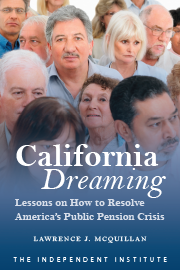Gov. Gavin Newsom fully reopened California’s economy on June 15, returning to “business as usual.” But health care should not return to the pre-pandemic status quo.
In June 2020, Newsom signed an executive order allowing companies that were not licensed by the state to provide urgently needed supplies such as hand sanitizer, ventilators, respirators, masks, and other personal protective equipment, provided the companies certified that their items complied with FDA standards. Newsom’s order opened California markets to entrepreneurs who wanted to combat the severe shortages. The new supply chains saved the lives of health care workers and others.
Medical associations, aided by government policies, have artificially restricted the number of people allowed to enter California health care occupations. For example, much like a medieval guild, the California Board of Registered Nursing limits how many students can attend nursing programs. As a result, more than 21,000 qualified applicants were denied enrollment in 2016–17.
Those people could have been nurses when COVID-19 swept across California. Instead, California experienced self-inflicted shortages of medical workers, which prolonged the lockdowns and restrictions on non-emergency care.
Some of Newsom’s reforms targeted staffing shortages. The governor eased licensing restrictions, permitting the hiring of out-of-state doctors, nurses, respiratory therapists, and other medical personnel. He streamlined the process for reinstating inactive or retired health care professionals.
Scope-of-practice rules were relaxed. These rules limit the tasks that specific health care workers can perform legally. Also, the cap on the number of nurse practitioners and physician assistants who can serve under a supervising physician was removed.
Some staff-to-patient requirements were eased. For example, the Newsom administration unveiled a fast-track waiver process for hospitals to increase the number of patients that a nurse can treat at one time.
All of these reforms improved patient care by giving providers the flexibility to hire out-of-state workers and allowed supervisors to better allocate staff, delegate duties, and prioritize care as conditions changed, while ensuring patient safety.
A series of rule changes at the state and federal levels also allowed telemedicine to flourish using in-state and out-of-state health care professionals. Telemedicine became a godsend for the elderly, disabled people, and others without reliable transportation during the pandemic.
Newsom and the state legislature should make these patient-centered emergency reforms permanent. After all, if it was right to eliminate those regulations during the pandemic, it would be immoral to reinstate them after the crisis. And officials should permanently weaken or eliminate the power of medical associations to restrict entry into health care occupations.
Governor Newsom made mistakes, too, and not just the French Laundry fiasco. He was typically reactive, not proactive, waiting for bottlenecks to appear. Some key reforms were not adopted until June and December 2020, deep into the crisis.
Newsom loaned 500 ventilators to the national stockpile and 50 ventilators to Michigan when health officials in Santa Clara County were asking for donations of ventilators.
He pursued a multibillion-dollar PCR testing strategy to detect infections, which was worthless at containing the spread of the virus because getting the results took too long. Instead, Newsom and officials across the country should have lobbied the FDA to quickly authorize inexpensive, at-home, nonprescription rapid antigen test kits, which would have helped contain the virus early in the pandemic.
In his State of the State Address, Newsom said, “We won’t be defined by this moment. We’ll be defined by what we do because of it.” Making the temporary pro-patient reforms permanent would lower health care prices and improve access to higher quality care, an appealing strategy as a recall election looms.











